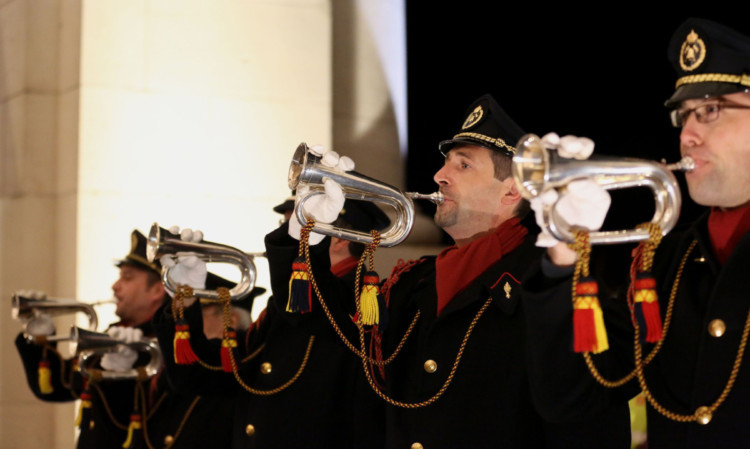For many people, the Last Post is an annual marker, played once a year on Armistice Day as the war dead are remembered.
In the Belgian town of Ypres, the bugle sounds each night in a perpetual reminder of those who lost their lives in the First World War.
For one British-born resident of Ypres, the ceremony that has been in place since 1928 still brings tears to her eyes.
Eve Saynor, who has lived in the town for seven years, said: “People don’t expect the feelings they have when they come here. I see people crying, I come here regularly and even I well up still.”
Mrs Saynor, whose husband works for the Commonwealth War Graves Commission, is a member of the Ypres branch of the Royal British Legion and turns out in the run-up to Armistice Day to collect for the Poppy Appeal.
The ceremony attracts hundreds of visitors as each night buglers from the local fire brigade play the Last Post and wreaths are laid in memory of those who died. It is a tradition that has taken place every day since the memorial, which is dedicated to British and Commonwealth soldiers who died in the Ypres Salient during the First World War, was unveiled in 1927.
Nearly 55,000 names are engraved on the wall of the memorial commemorate Commonwealth soldiers who died but whose bodies have never been identified or found.
Richard Merton and his wife Tarn, both 78, from Ashby de la Zouch, Leicestershire, watched the ceremony for the first time.
Mr Merton said: “My father was a horse gunner in the First World War in France and he subsequently fought in the Second World War where he was not quite so lucky he was a guest of the Germans for the entire war. When you think there are 50,000 names up there it is staggering. It just brings home the enormity of it. We should never be allowed to forget what sacrifices have been made.”
